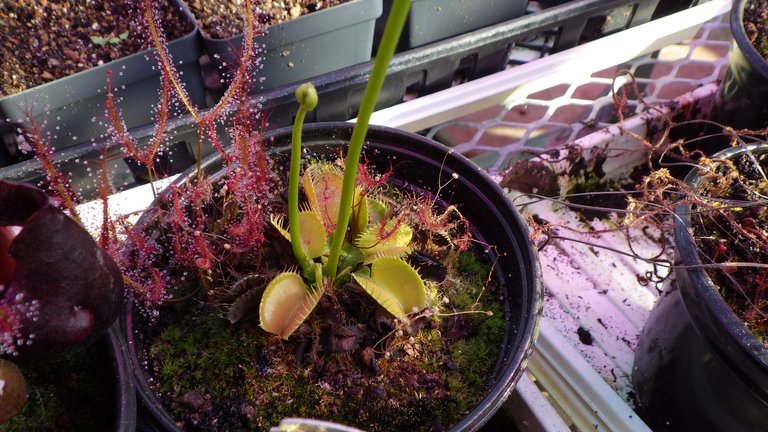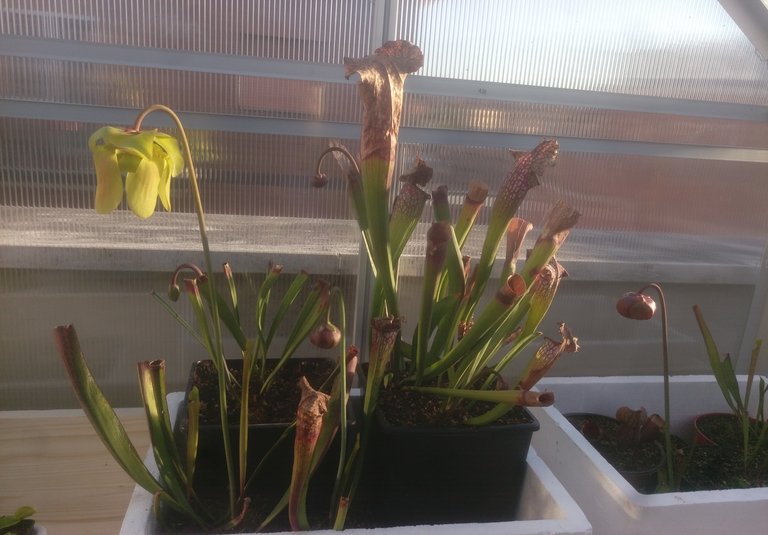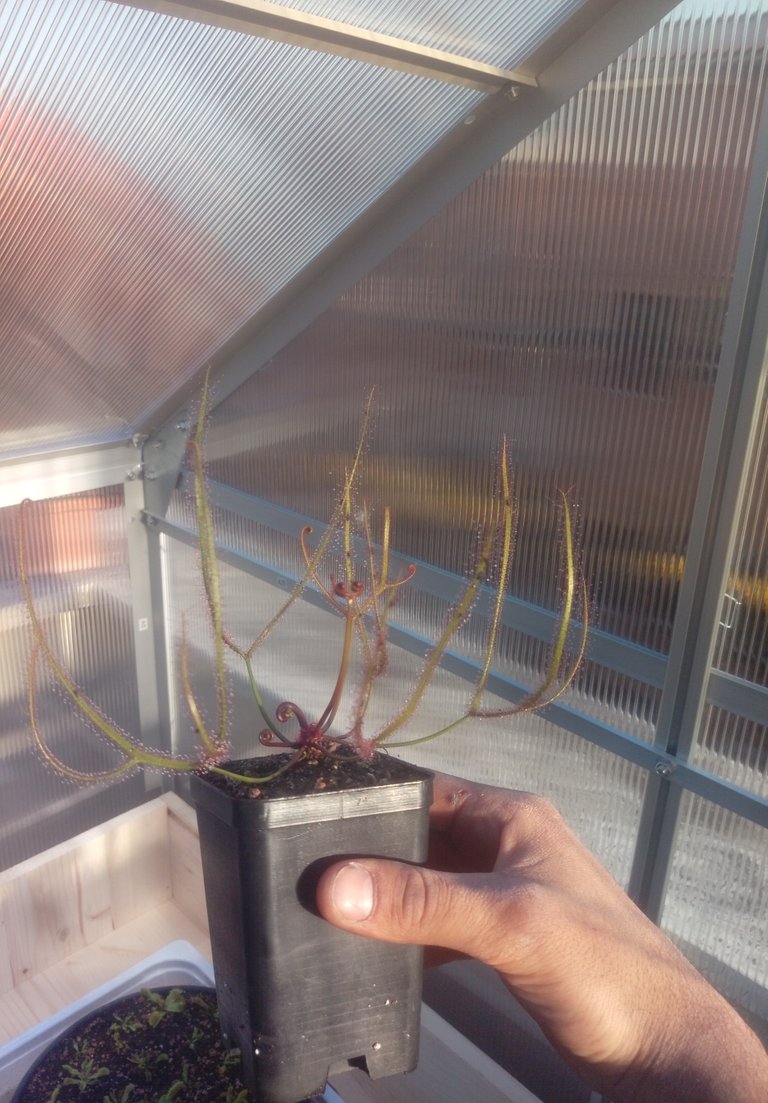Sarracenia purpurea (purple pitcher plant) - family Sarraceniaceae with Drosera binata (forked sundew) - family Droseraceae.
Sarracenia purpurea is also known as the northern pitcher plant, turtle socks, or side-saddle flower. It is native to North America and Canada and is the only member of the genus that inhabits cold temperate climates. It primarily feeds on flies, ants, spiders and moths. In the wild it forms a commensal relationship with a mosquito (Wyeomyia smithii) and a midge (Metriocnemus knabi), and the pitcher fluid harbors a number of protists, rotifers and bacteria that aid in prey digestion.
Drosera binata is also known as the fork-leaved sundew and is native to Australia and New Zealand. The name refers to the leaves which are dichotomously divided or forked. Like other Drosera species the fork-leaved sundew catches insect prey using stalked mucilaginous glands that cover their leaf surfaces. The droplets of mucilage on the tips of glandular trichomes resemble morning dew (hence the name sundew).
Dionaea muscipula (Venus flytrap) - family Droseraceae with Drosera binata (forked sundew) - family Droseraceae
Dionaea muscipula the Venus flytrap is native to the East Coast of the USA (North and South Carolina) and catches prey (insects and arachnids) with a trap formed at the terminal portion of each leaf. The trap is triggered by tiny trigger hairs on their inner surface. The plant produces flowers that are elevated well above the traps on long stalks.
Photographs are my own and were taken in the Dept. of Horticulture and Landscape Architecture Greenhouse at Purdue University, West Lafayette, Indiana, USA.


Ciao david, allora qualcuno che coltiva piante carnivore su steemit c'è! =)
Questa è la mia Drosera multifida
Aspetto tuoi aggiornamenti!
Cephalotus follicularisCiao @cooltivar! Sorry my Italian is not good! Thanks for the photos of your carnivorous plants. It is nice to meet someone with a common interest. My favorite has to be:
Beautiful plant, unfortunately cephalotus and heliamphora I never had the opportunity to grow them!
Good continuation!
I used to use sundews to control greenhouse flies in my vegetable crops class at Purdue:
hahaha I would say a great idea